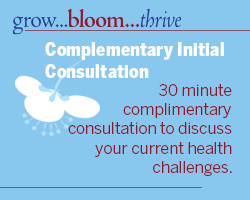Acupuncture is the most famous and widely used tools of Traditional Chinese Medicine (TCM). It is an extremely safe procedure that involves stimulating various points on the body with thin, sterile, single-use needles. The needles are about as thick as the hair on your eyebrow. Most of the points are located on meridians. The twelve main meridians cover the entire body. Information about the flow of energy, or qi as it is called in Traditional Chinese Medicine, allows us to use points in the treatment that sometimes are located far away from the areas of discomfort. For instance, we can use points on the legs and feet to treat a headache.
No one really knows how old the practice of acupuncture is, although most records put it at between 2,500 – 3,000 years old. So although acupuncture is quite ancient, the World Health Organization has endorsed it for over four hundred different conditions! Acupuncture, like all of Traditional Chinese Medicine, is not generally a quick fix and asks you, as the patient, to be an active participant in your healing process.
The vocabulary of healing
Meridians
I mentioned meridians in the discussion of acupuncture. There are twelve main meridians identified in Traditional Chinese Medicine. These meridians are energy highways and between them cover the entire body. Most of the traditional, almost four hundred, acupuncture points fall on these twelve main meridians.
Traditional Chinese Medicine
Traditional Chinese Medicine (TCM) is the umbrella encompassing acupuncture, Chinese herbs, gua sha, tuina and cupping. Traditional Chinese Medicine uses pattern diagnosis to look at the whole body, making it truly holistic in nature. This unique kind of diagnosis is a powerful tool to address both the symptoms we are aware of as well as the underlying causes of disease. It is by using pattern diagnosis that acupuncture points are chosen and herbs prescribed. This medicine has been practiced for 2,500 years and it has just as much to offer modern man as it did to ancient man.
Qi
Acupuncture and Traditional Chinese Medicine are filled with words and concepts that, at first glance, seem quite foreign – because, well, they are. Yet, the concepts are fairly easy to understand and we can see them in our everyday lives. Qi, sometimes spelled Chi and pronounced “chee”, is often thought of as the energy of the body. During acupuncture treatments, it is common to feel waves of sensation moving through the body. That is the feeling of qi moving through the body.
The vocabulary of treatment
Another way of thinking about qi is as the motive force for change. What changes is your life asking you to make? Are you letting the changes flow? Health, in all aspects of our lives, involves being open to the energy of change.
Chinese Herbs
One aspect of TCM treatment includes the use of Chinese Herbs and Formulas. Using hundreds of herbs, which have been studied and collected over thousands of years, formulas can be created specifically for each individual and modified as time goes by. Chinese Herbal therapy can is a powerful therapy which can be used alone or in addition to acupuncture and other therapies.
Moxibustion
Moxa, or mugwort, is a herb that is burned over an acupuncture point or meridian point to warm and invigorate the points or areas. Generally, we use indirect moxa. That means, a cigar-shaped roll of the herb is burned over with skin without ever touching it. Sometimes moxa is burning on needles and occasionally it is burning directly on the skin with layer of protection, like a slice of ginger, between the skin and the moxa. At this time, Blue Branches Acupuncture is unable to offer moxa therapy.
Cupping
Cupping is one of the oldest methods of treatment in TCM. At Blue Branches Acupuncture, I use silicone cups to create suction. Cupping is generally preformed on the back but can also be used on sites of injury. Cupping improves blood flow, opens meridians and collaterals and breaks up stagnation.
Guasha
Gua means to scrape or rub. Sha is the red, elevated bumps on the skin that appear with the rubbing. In Chinese Medicine we think of those bumps as indications that the fluids of the body are not flowing properly in that area. The rubbing moves the fluids up to the surface giving the body an opportunity to process it. Both acute conditions like the common cold and chronic conditions such as poor circulation are effectively and often quickly treated with Guasha.

